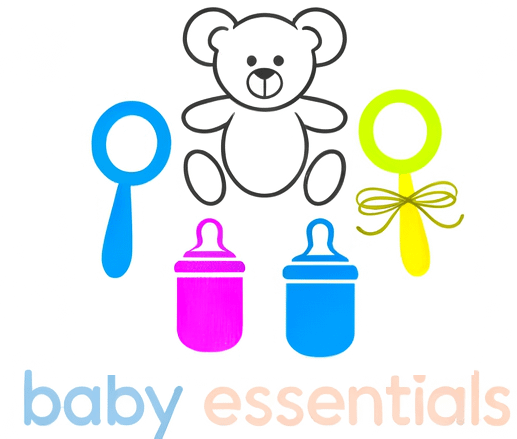Crying is a newborn’s primary way to communicate needs, but it can be distressing for both baby and caregiver. Understanding why babies cry and knowing how to soothe them effectively is essential for every parent. This comprehensive guide explores the latest evidence-based techniques, expert recommendations, and practical tips to calm a crying baby, ensuring both comfort and peace of mind.
How to Soothe a Crying Baby: Effective Strategies
Why do babies cry: Babies cry for various reasons, including:
- Hunger
- Dirty or wet nappy
- Tiredness
- Wanting a cuddle
- Wind (gas)
- Being too hot or cold
- Boredom or overstimulation
Crying typically peaks between 4 to 8 weeks of age and gradually decreases as babies grow. Sometimes, the reason for crying is not immediately obvious, making soothing techniques invaluable.
Proven Techniques to Soothe a Crying Baby
1. The Power of Movement: Walking and Rocking
Recent scientific studies confirm that holding and walking with a crying baby for five minutes is the most effective way to calm them. This method, known as the “transport response,” triggers a calming reflex in infants, reducing their heart rate and often leading to sleep. After walking, it is recommended to sit and hold the baby for an additional five to eight minutes before laying them down to prevent awakening.
Rocking in a pram, stroller, or rocking chair also provides rhythmic motion similar to walking, which can be soothing, though slightly less effective than walking.
2. The 5 S’s: Dr. Harvey Karp’s Soothing System
Paediatrician Dr. Harvey Karp’s “5 S’s” method is widely recommended and supported by both parents and professionals:
- Swaddle: Wrapping your baby snugly in a blanket mimics the womb and provides security. Always follow safe swaddling guidelines and stop swaddling once your baby shows signs of rolling over.
- Side or Stomach Position (for soothing, not sleep): Holding your baby on their side or tummy (never for sleep) can help trigger a calming reflex. Always place your baby on their back to sleep.
- Shush: Making a loud “shhhh” sound near your baby’s ear or using white noise mimics the sounds of the womb and can be very calming.
- Swing: Gentle swinging, bouncing, or rocking motions can help settle a fussy baby. Use small, slow movements for best results.
- Suck: Sucking is naturally soothing. Offer a pacifier, your clean finger, or let your baby suckle at the breast if breastfeeding is established.
3. Skin-to-Skin Contact
Holding your baby against your bare chest provides warmth, comfort, and a sense of security. Skin-to-skin contact helps regulate your baby’s body temperature, heart rate, and breathing, and is especially beneficial for premature or stressed infants.
4. Gentle Touch: Massage and Stroking
A gentle massage can relax your baby, improve circulation, and relieve discomfort from gas or colic. Use baby-safe oil or lotion and gently rub your baby’s back, arms, legs, and feet. Stroking your baby’s back rhythmically while holding them close can also be very soothing.
5. White Noise and Soothing Sounds
White noise machines, fans, vacuum cleaners, or soft lullabies can calm a crying baby by replicating the sounds they heard in the womb. Singing to your baby, regardless of your musical ability, can also provide comfort and strengthen your bond.
6. Warm Bath
A warm bath may help some babies relax and stop crying, though it can make others more upset. If your baby enjoys bathtime, include it as part of your soothing routine.
7. Feeding and Burping
Hunger is a common cause of crying. Offering the breast or bottle can quickly calm a hungry baby. After feeding, ensure you burp your baby to relieve any trapped air, which can cause discomfort and crying.
8. Swaddling
Swaddling creates a cosy, womb-like environment that can help newborns feel secure and settle down faster. Always swaddle safely, leaving room for hip movement, and discontinue swaddling when your baby begins to roll over.
9. Pacifiers and Sucking
Non-nutritive sucking, such as on a pacifier or thumb, is a powerful self-soothing tool for babies. If breastfeeding, wait until it is well established before introducing a pacifier to avoid nipple confusion.
10. Distraction and Engagement
Sometimes, a change in scenery or a new activity can help. Try showing your baby a colourful mobile, rattle, or playing peek-a-boo. Gentle distraction can redirect your baby’s attention and stop the tears.
Addressing Common Crying Triggers
Hunger
Feed your baby on demand, as hunger is the most common reason for crying.
Dirty Nappy
Check and change your baby’s nappy regularly to keep them comfortable.
Tiredness
Look for signs of sleepiness and help your baby settle before they become overtired, which can make soothing more difficult.
Gas and Colic
Burp your baby after feeds and try gentle tummy massages to relieve gas. Colic, defined as crying for more than three hours a day, three days a week, often improves by three to four months of age.
Temperature
Make sure your baby is not too hot or too cold by dressing them appropriately for the room temperature.
Overstimulation or Boredom
Move to a dim, quiet room if your baby is overstimulated. Conversely, if your baby is bored, gentle play or a walk outside can help.
When to Seek Help
While most crying is normal, contact your healthcare provider if your baby:
- Cries excessively, and nothing soothes them
- Has a fever, vomiting, diarrhoea, or other signs of illness
- Shows changes in feeding or sleeping patterns
- Appears to be in pain
Trust your instincts; if something feels wrong, seek medical advice.
Tips for Parents: Self-Care and Support
Caring for a crying baby can be exhausting and stressful. Remember:
- Take breaks when needed, ask a partner, friend, or relative for help.
- Put your baby safely in their crib for a few minutes if you feel overwhelmed.
- Never shake your baby.
- Seek support from healthcare professionals or parenting groups if you’re struggling.
Frequently Asked Questions
How long should I try each soothing technique?
Spend a few minutes on each method. If one doesn’t work, try another or combine techniques (e.g., swaddling and rocking).
Is it okay to let my baby cry for a while?
Short periods of crying are not harmful, but always check for underlying needs. Never leave a baby to cry for extended periods without comfort.
Should I use a pacifier?
Pacifiers are safe for most babies and can reduce the risk of SIDS when used at sleep time. Wait until breastfeeding is established before introducing one.
Conclusion
Soothing a crying baby is a blend of art and science. By understanding your baby’s cues and using proven techniques, such as walking, swaddling, white noise, and gentle touch, you can provide comfort and security. Every baby is unique, so experiment with different methods to discover what works best for your child. Remember, support is available, and you are not alone on this parenting journey.
References
- NHS: Why Babies Cry
- New Scientist: Walking with a crying baby for 5 minutes is the best way to soothe them
- What to Expect: How to Soothe a Crying Baby
- Healthline: How to Soothe a Crying Baby
- Baby Sleep Code: How to Soothe a Crying Baby
- Pampers UK: How to Soothe a Crying Baby
- ScienceDaily: Walking with a crying baby
This article is based on the latest research and expert guidance as of June 2025. For personalised advice, consult your paediatrician or healthcare provider.

